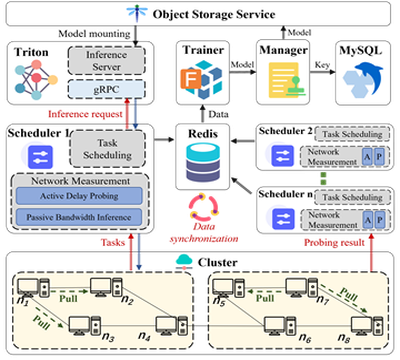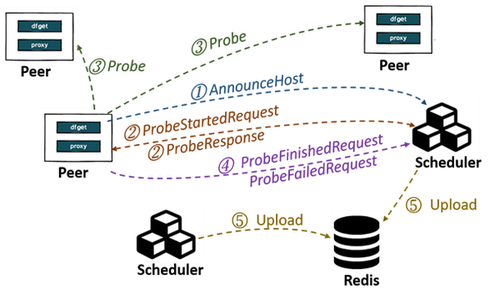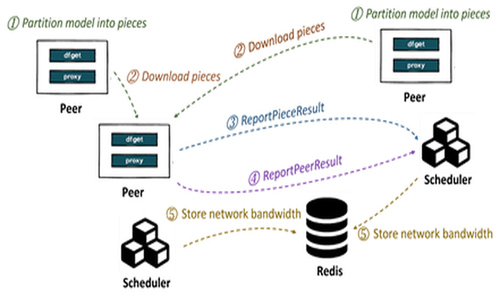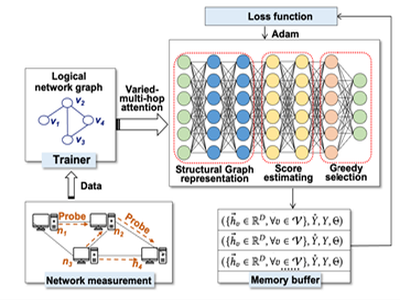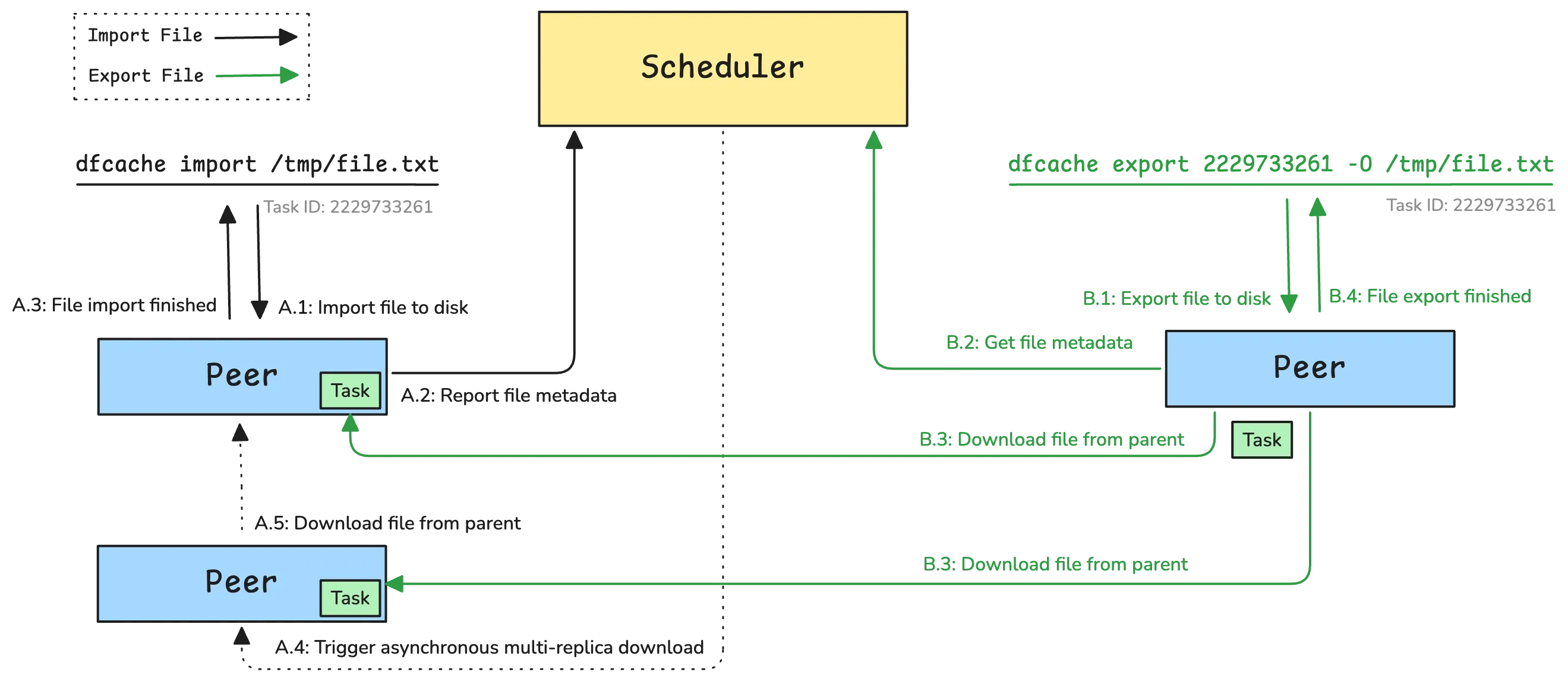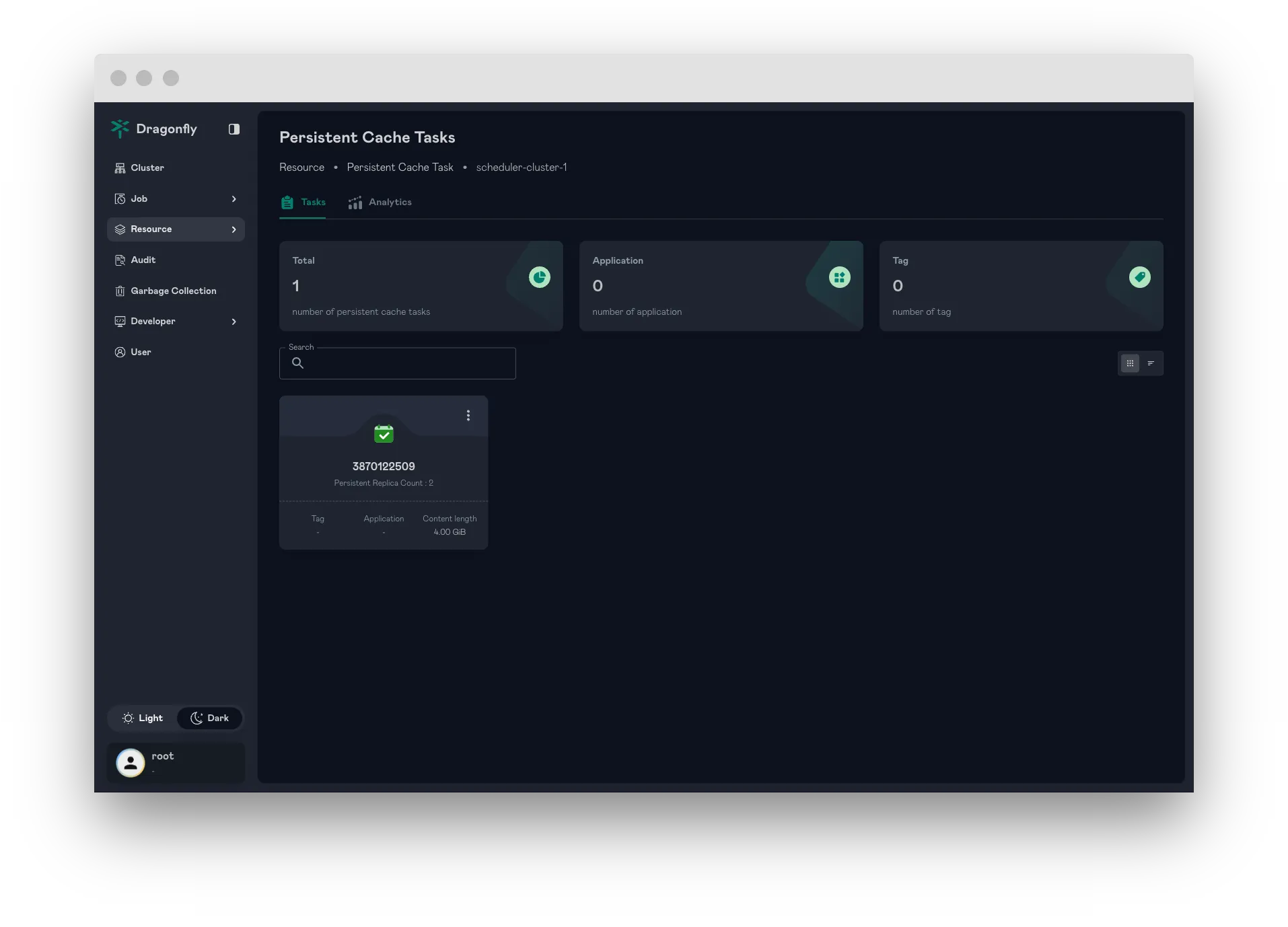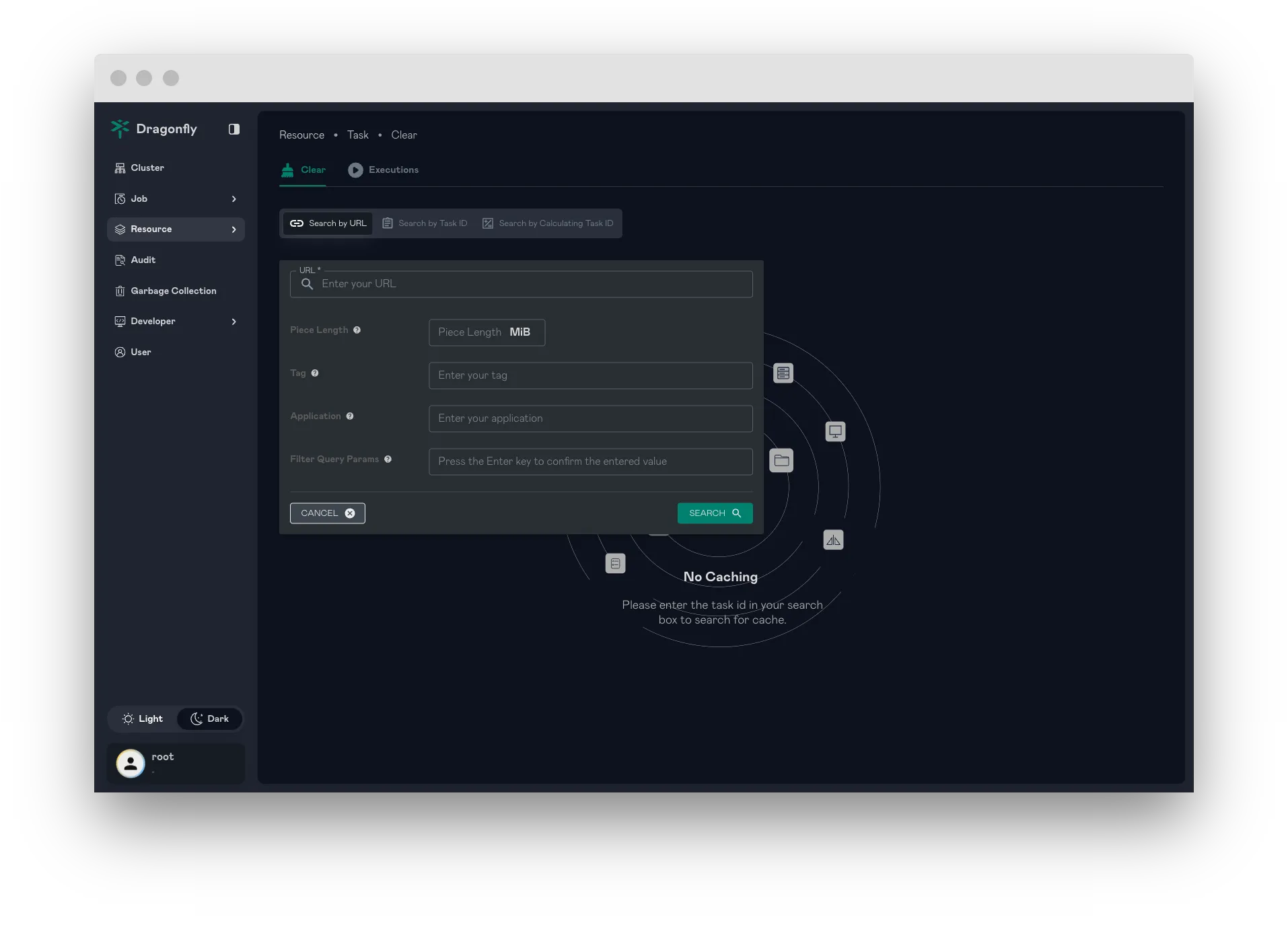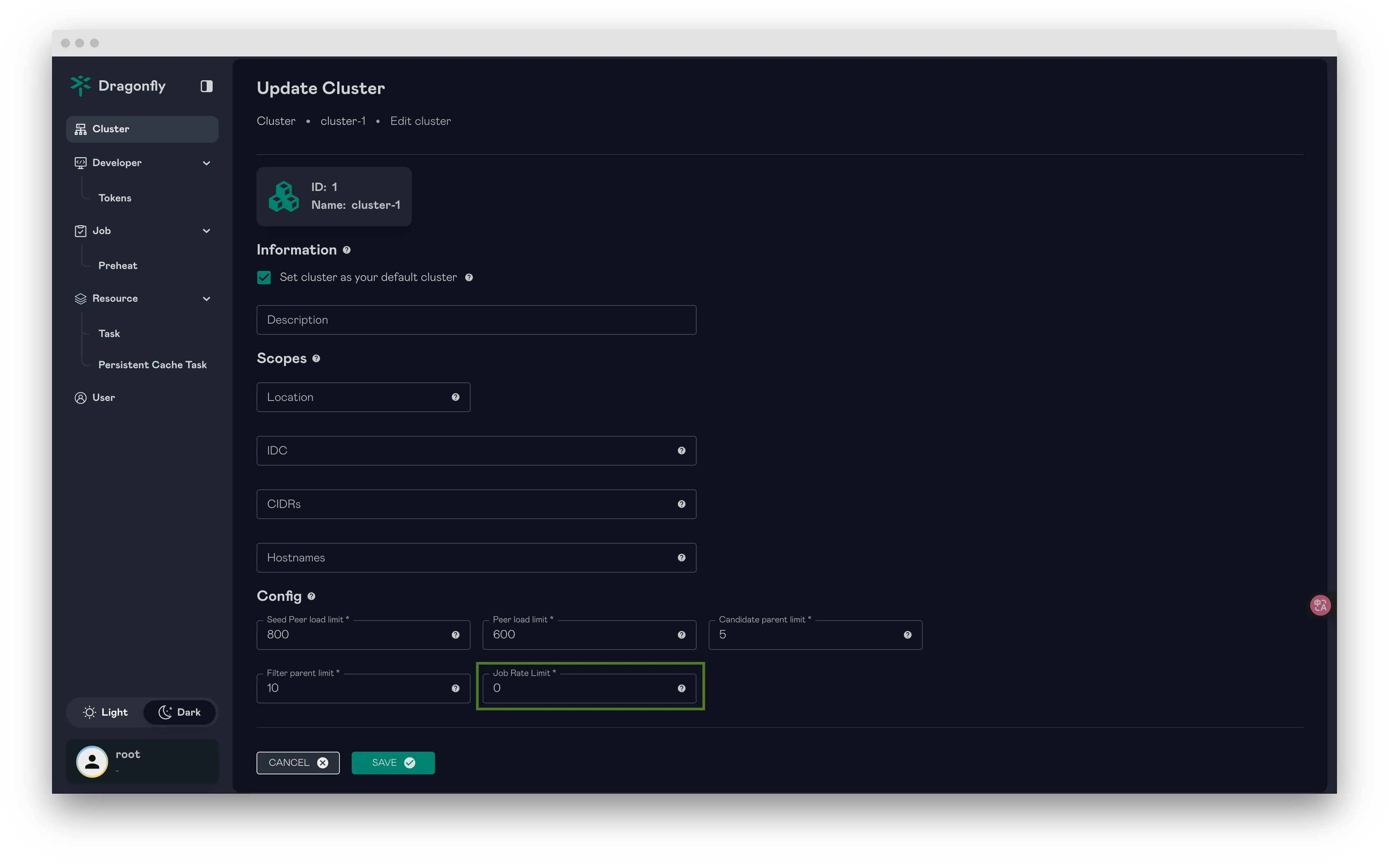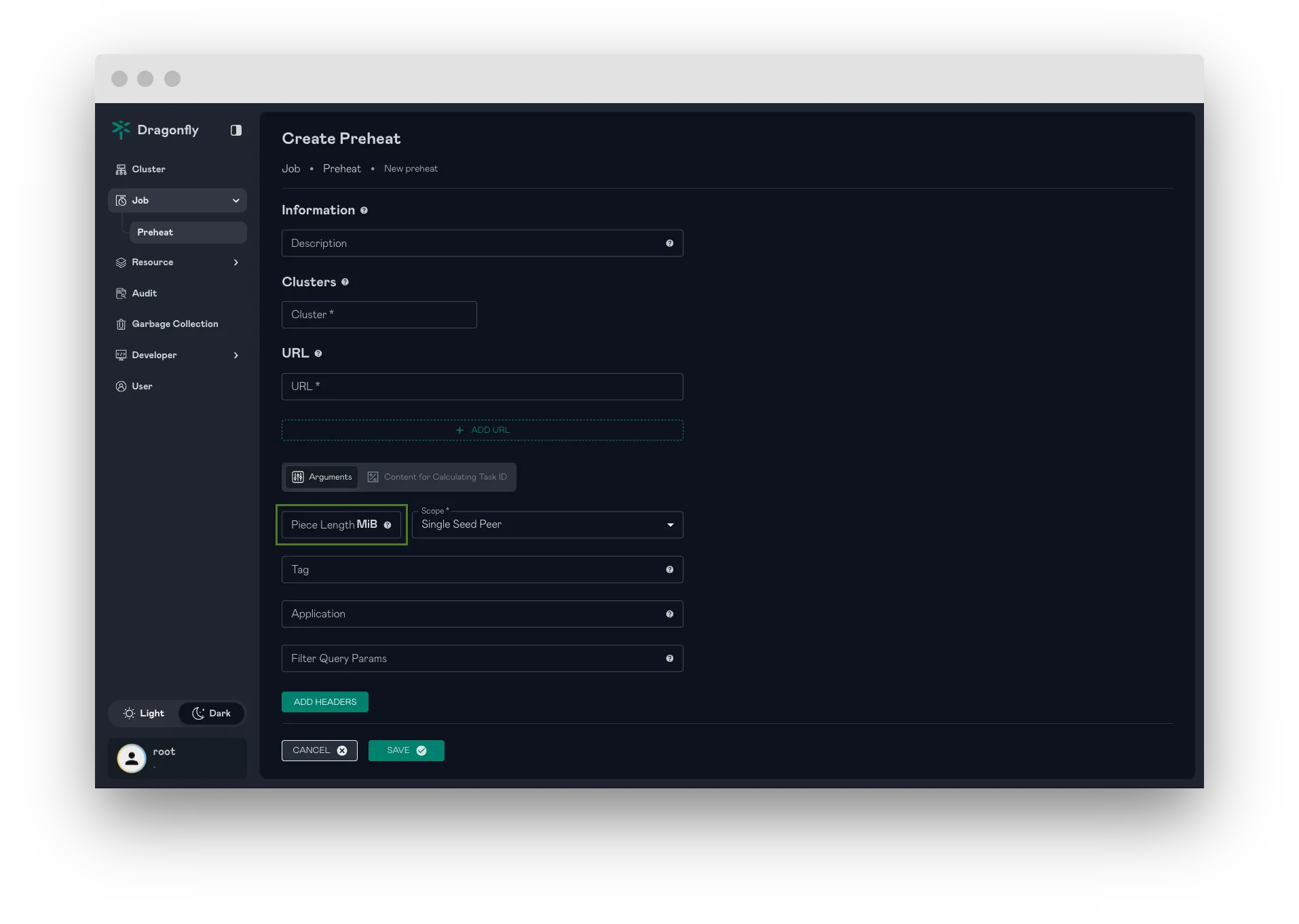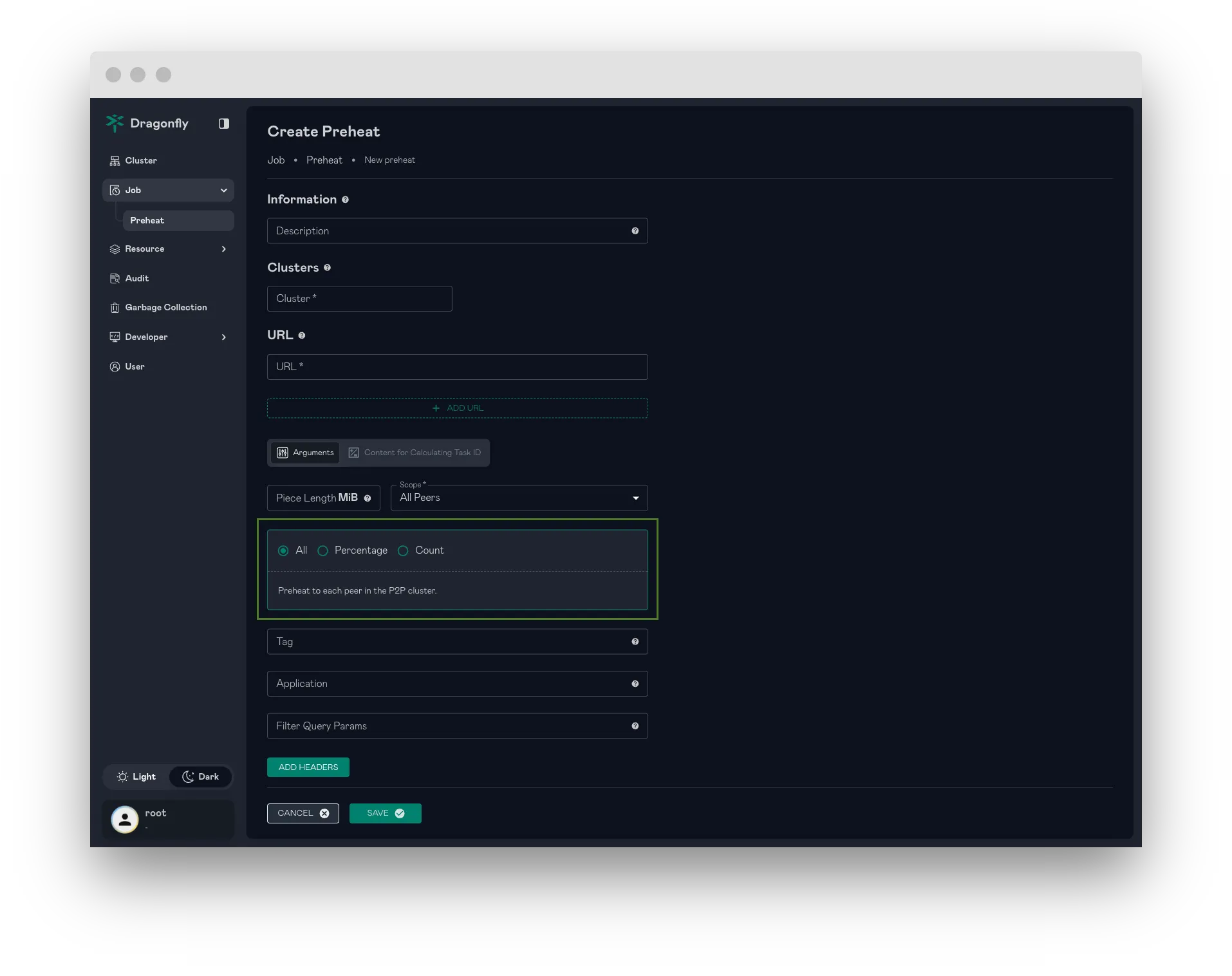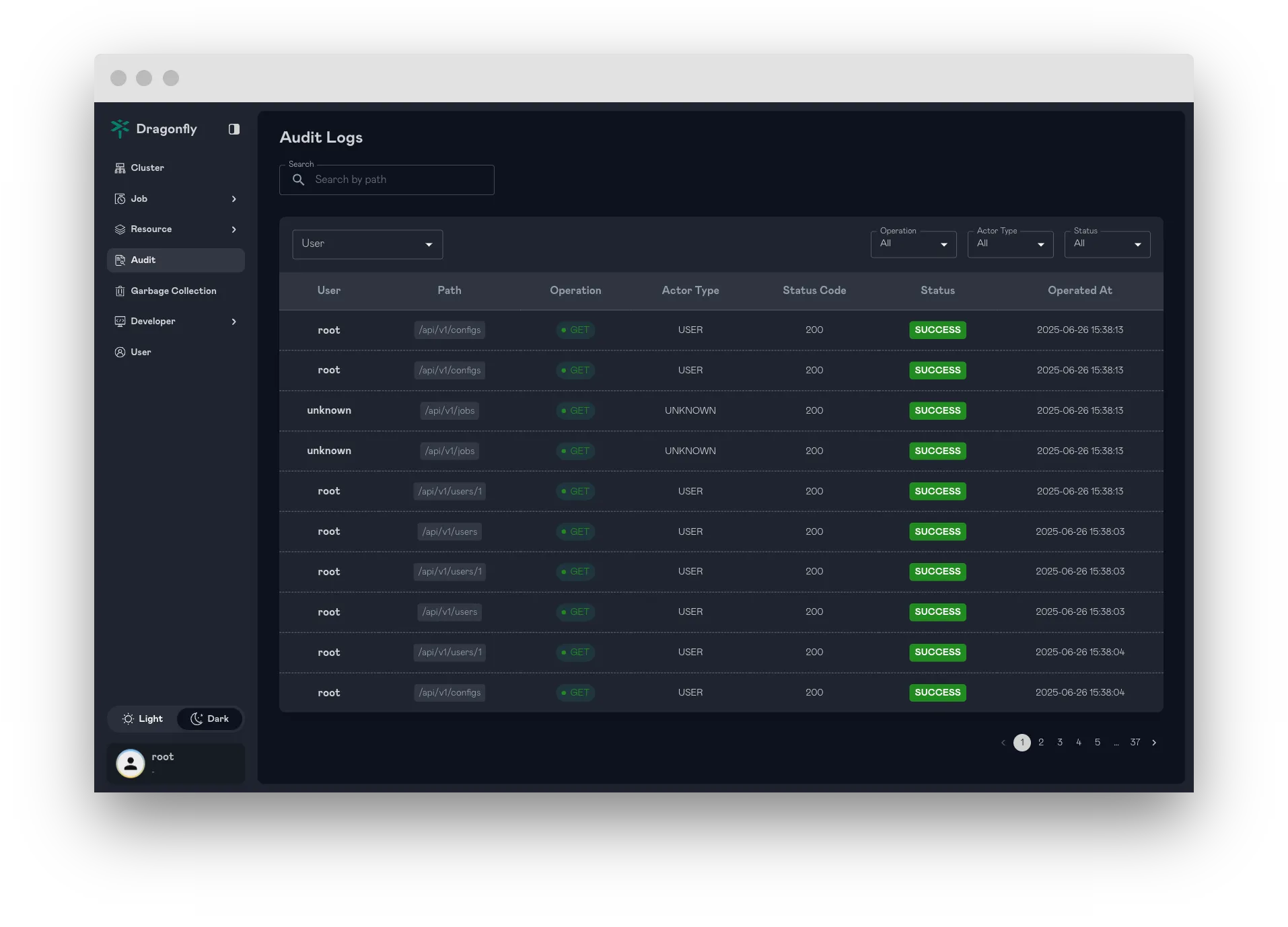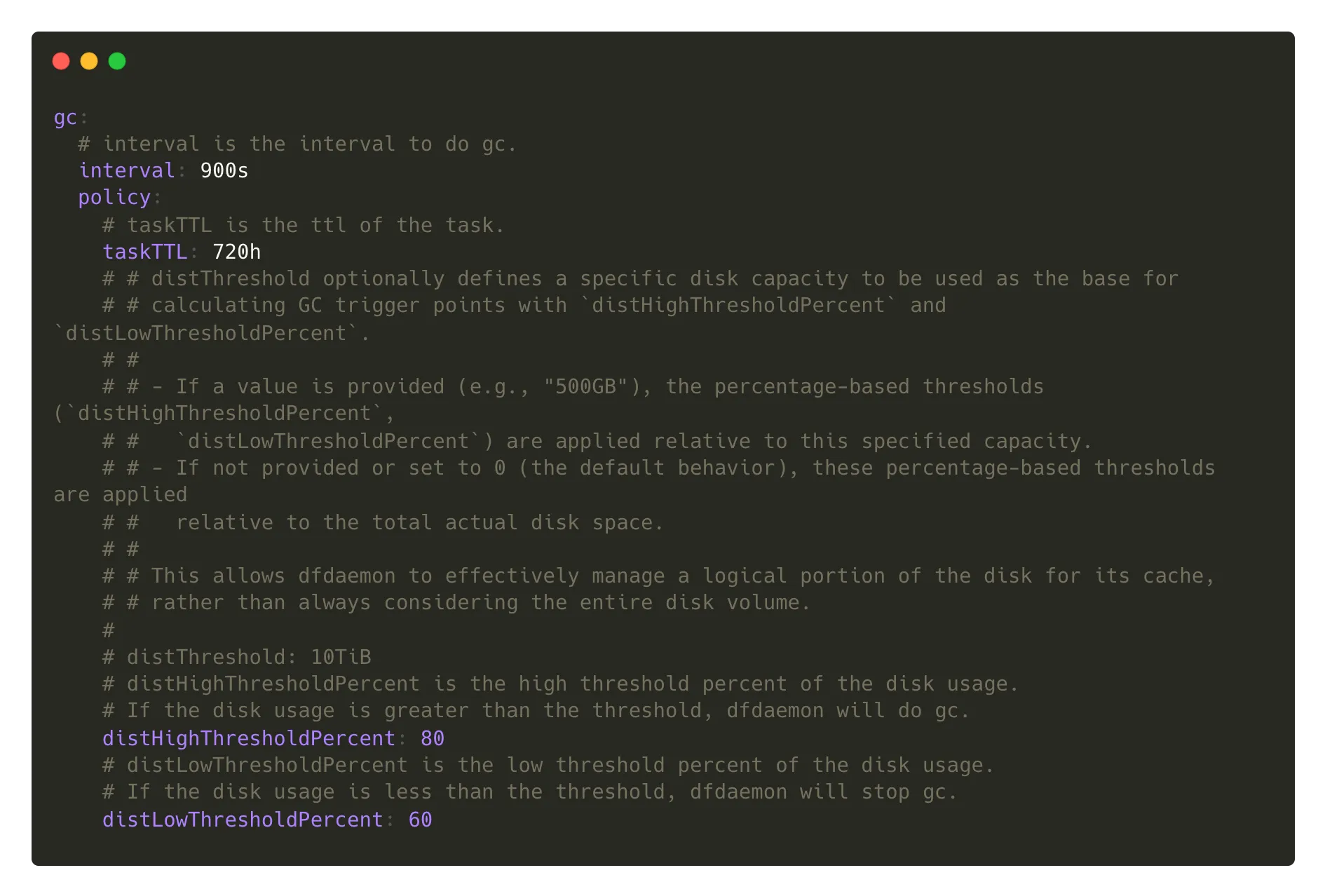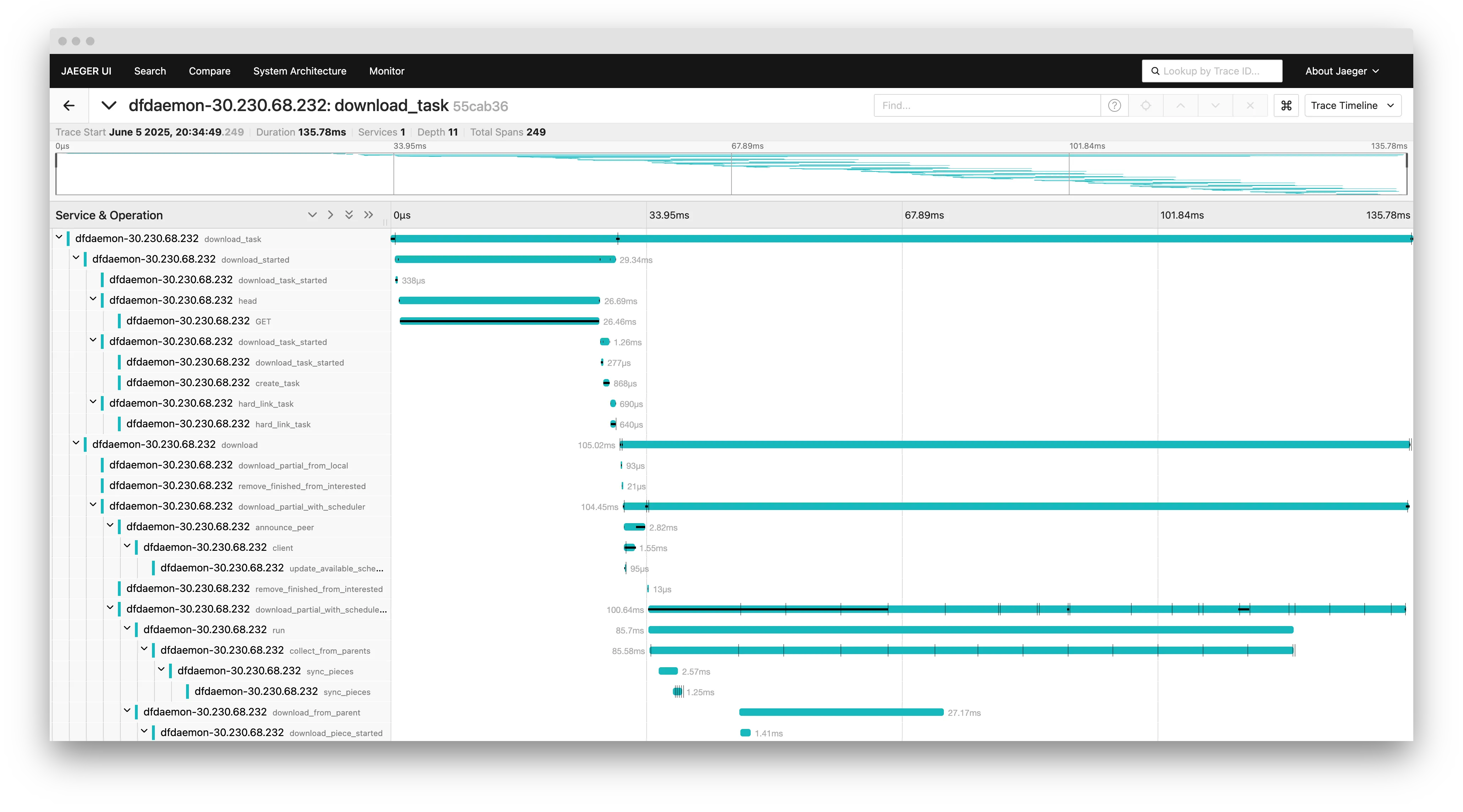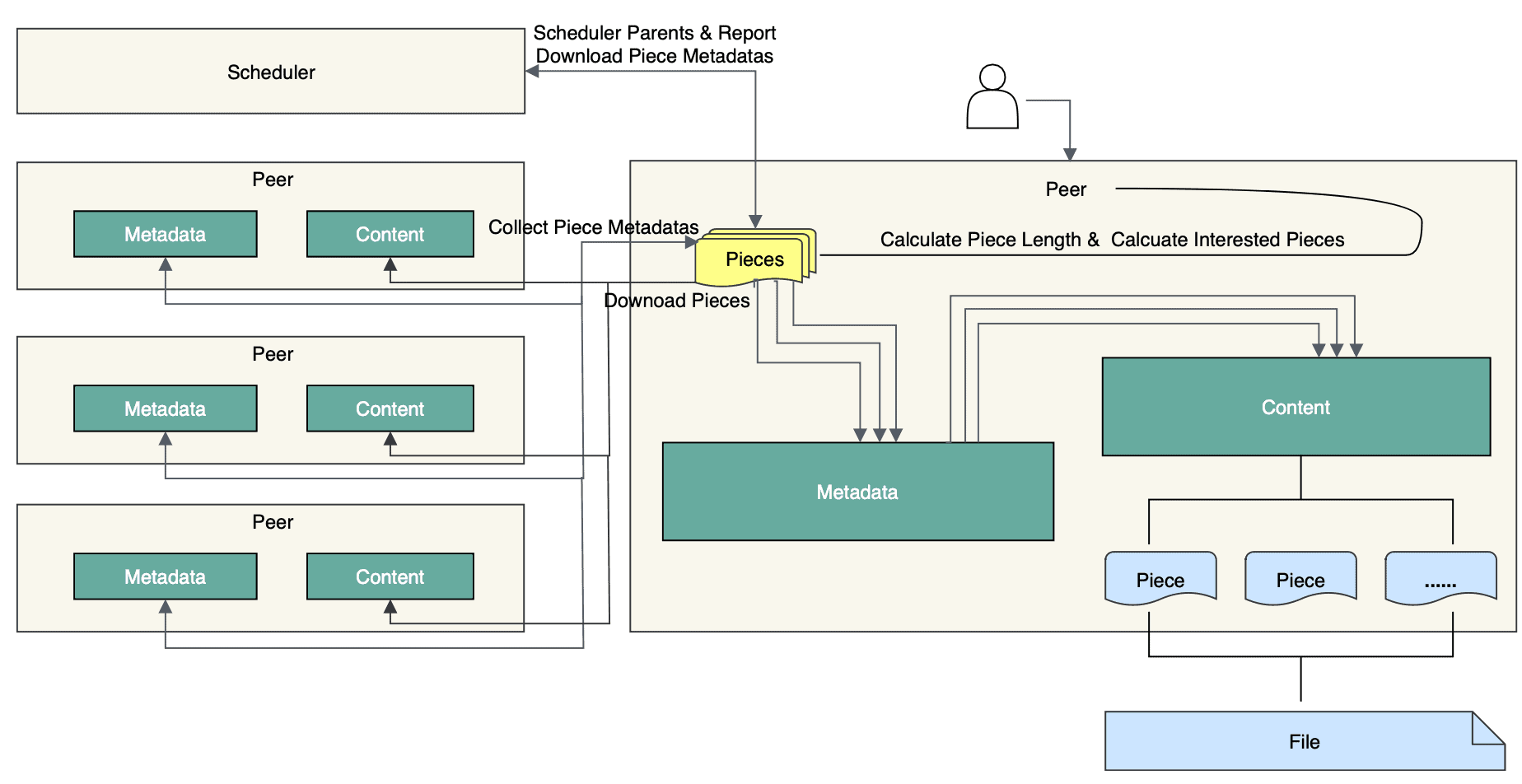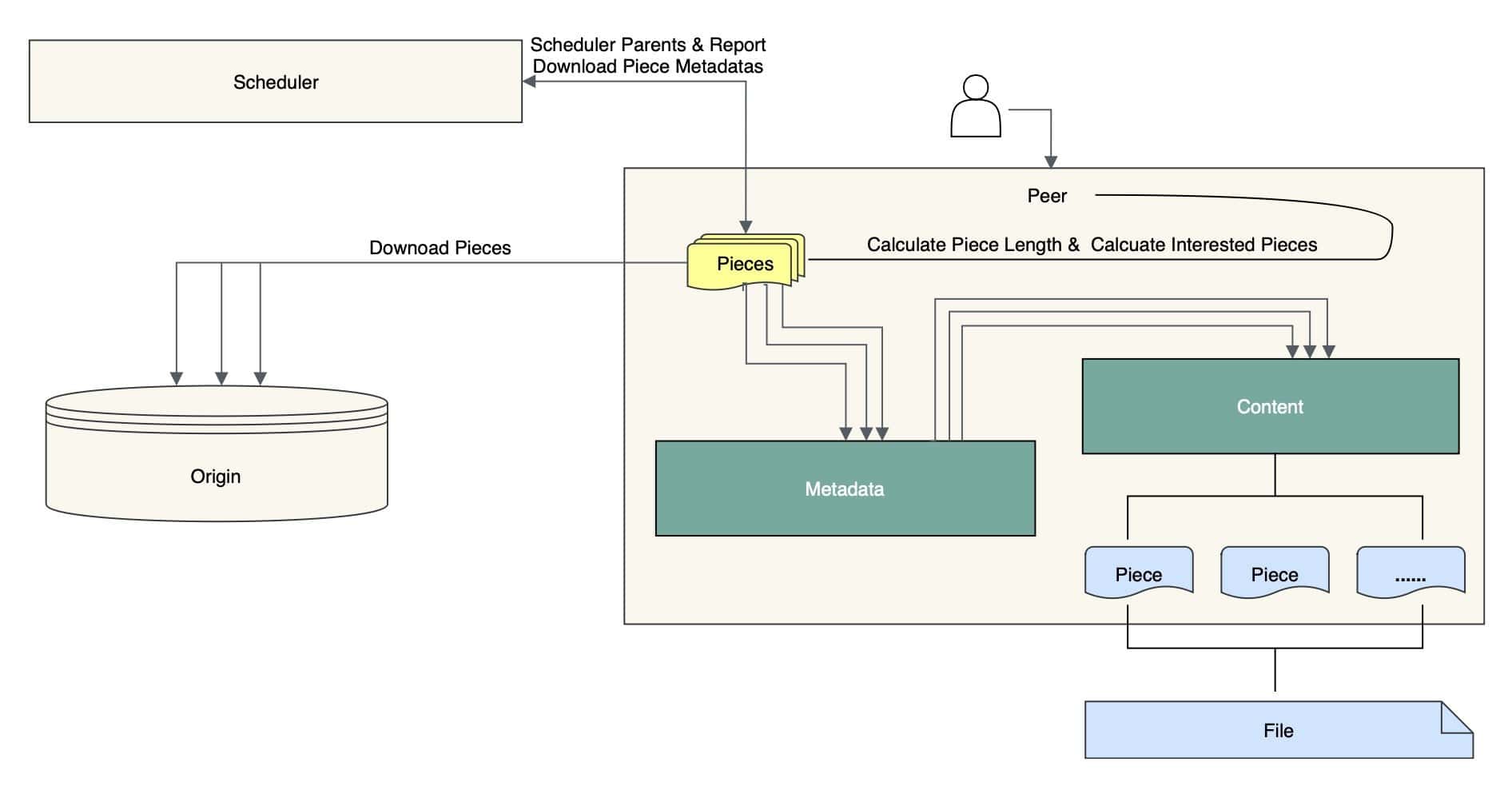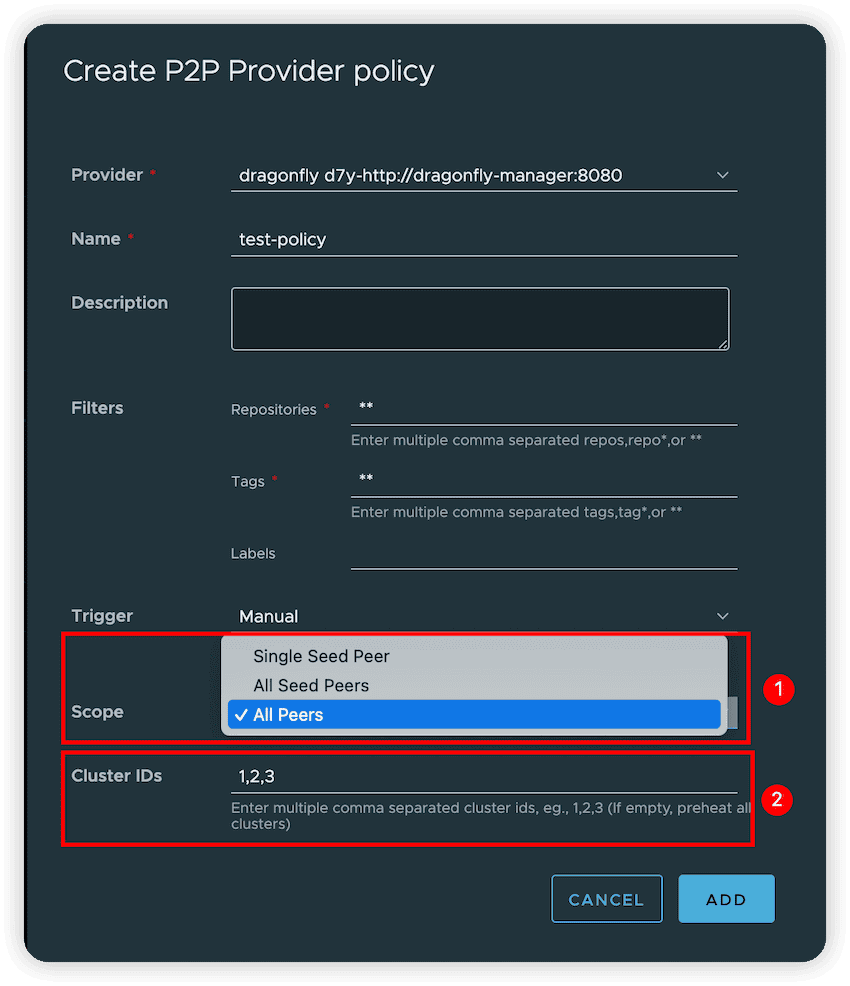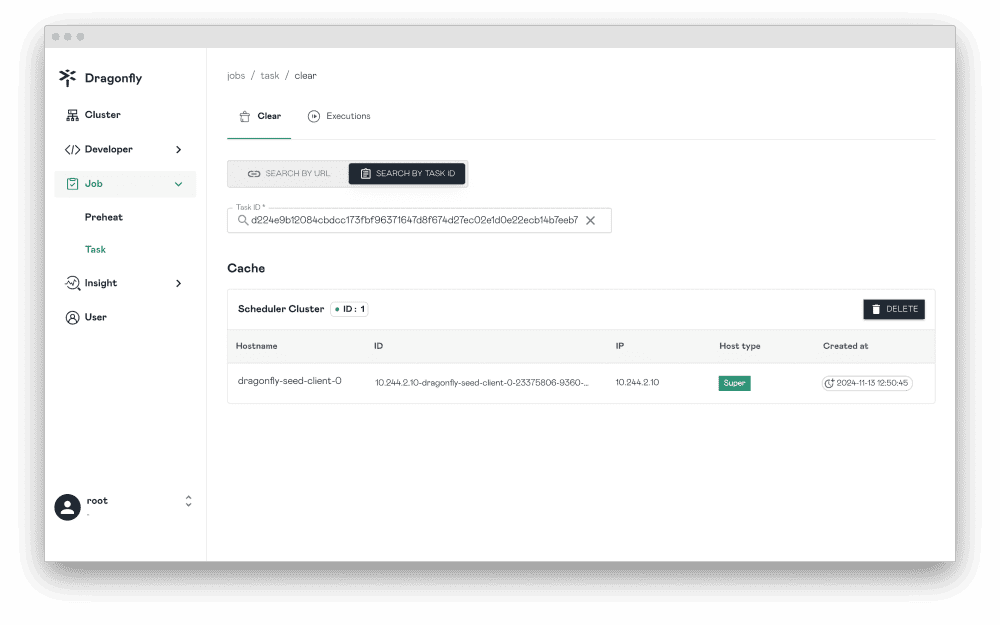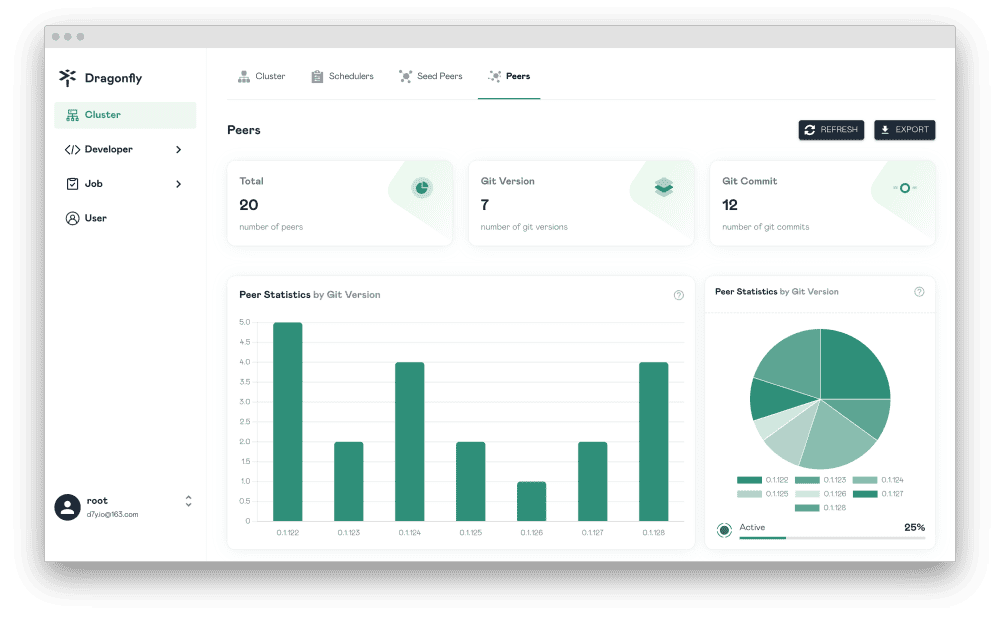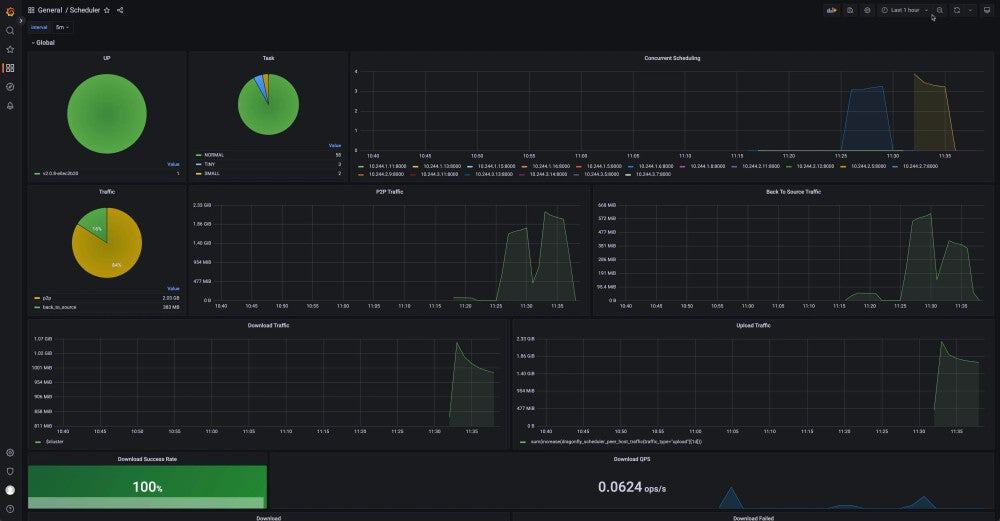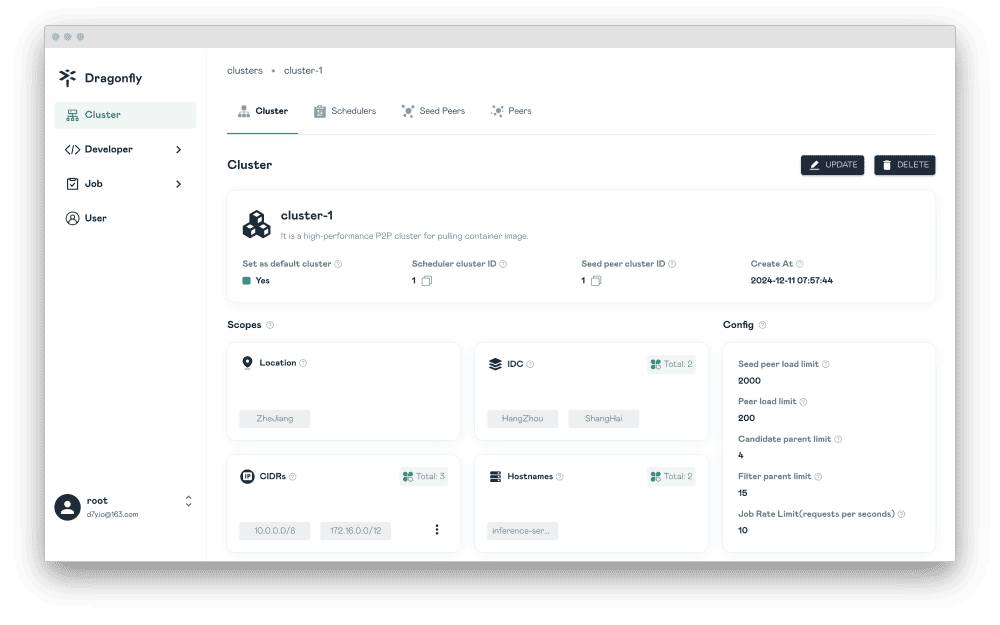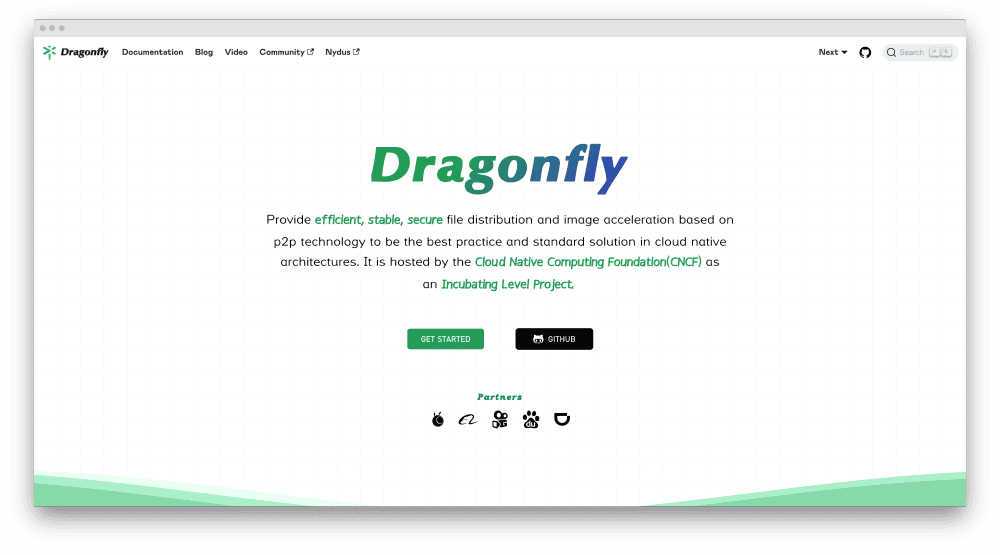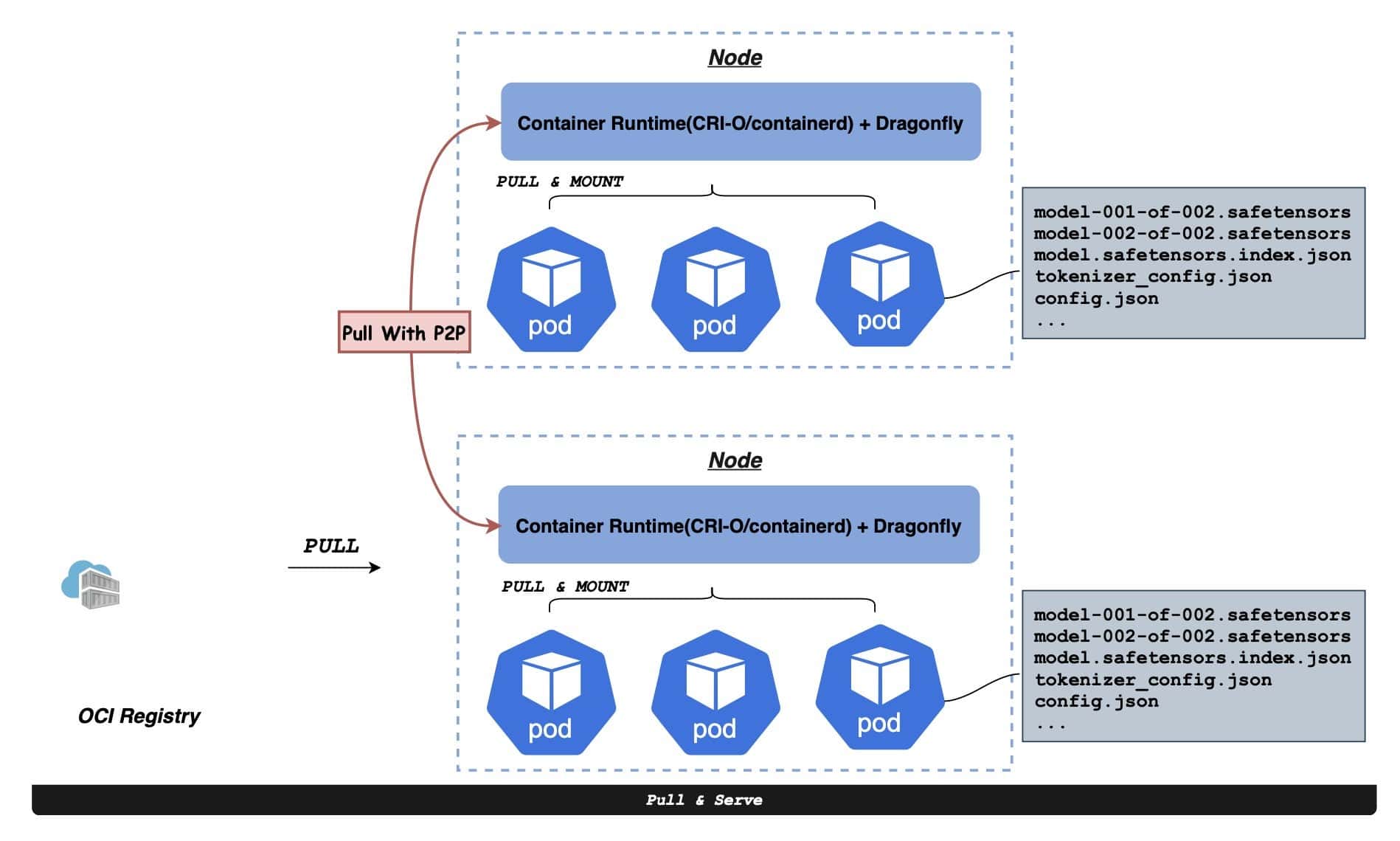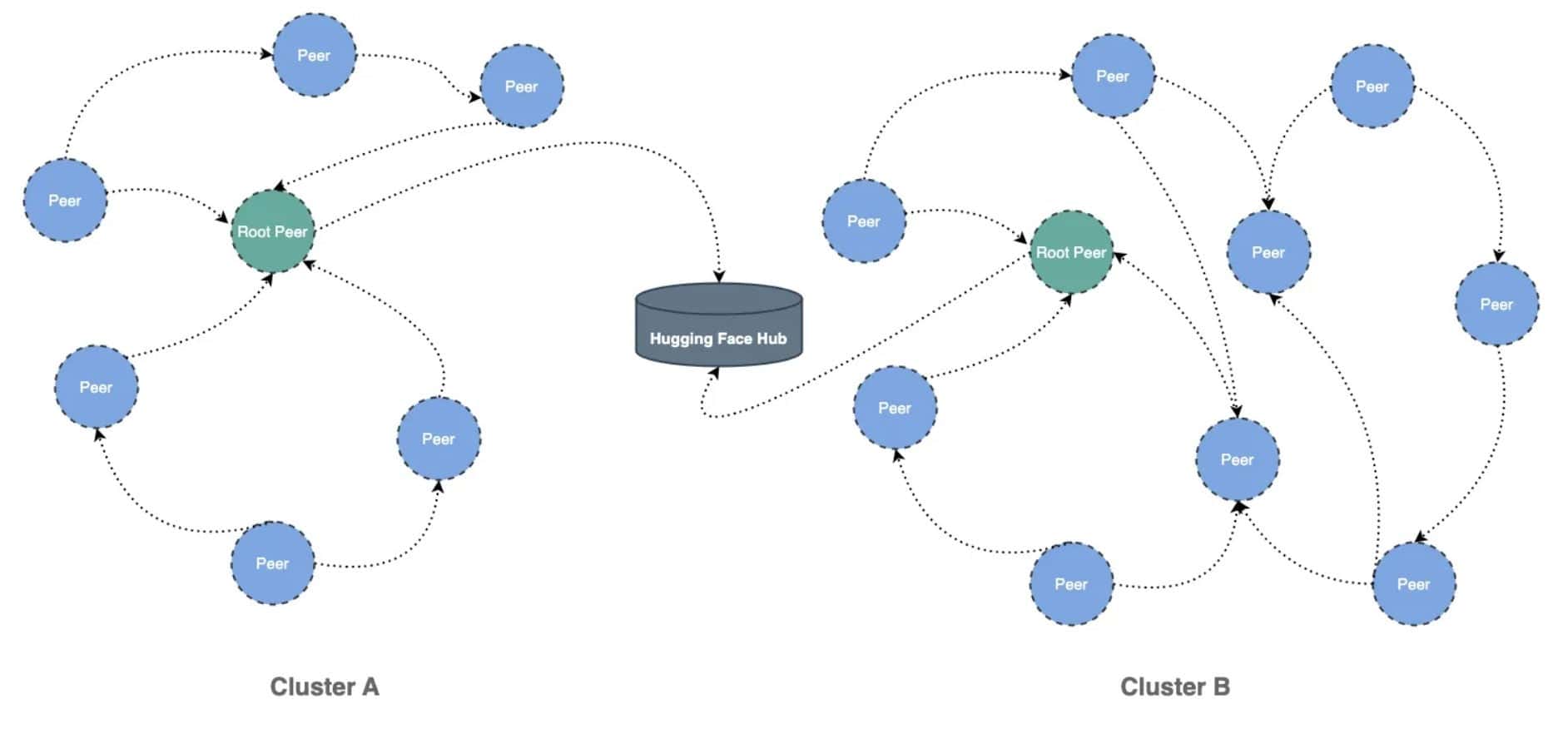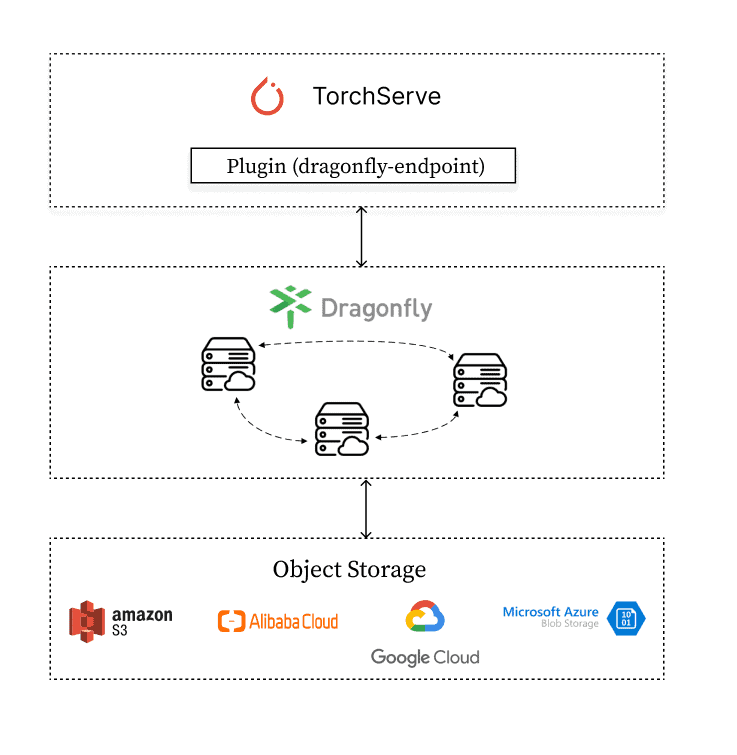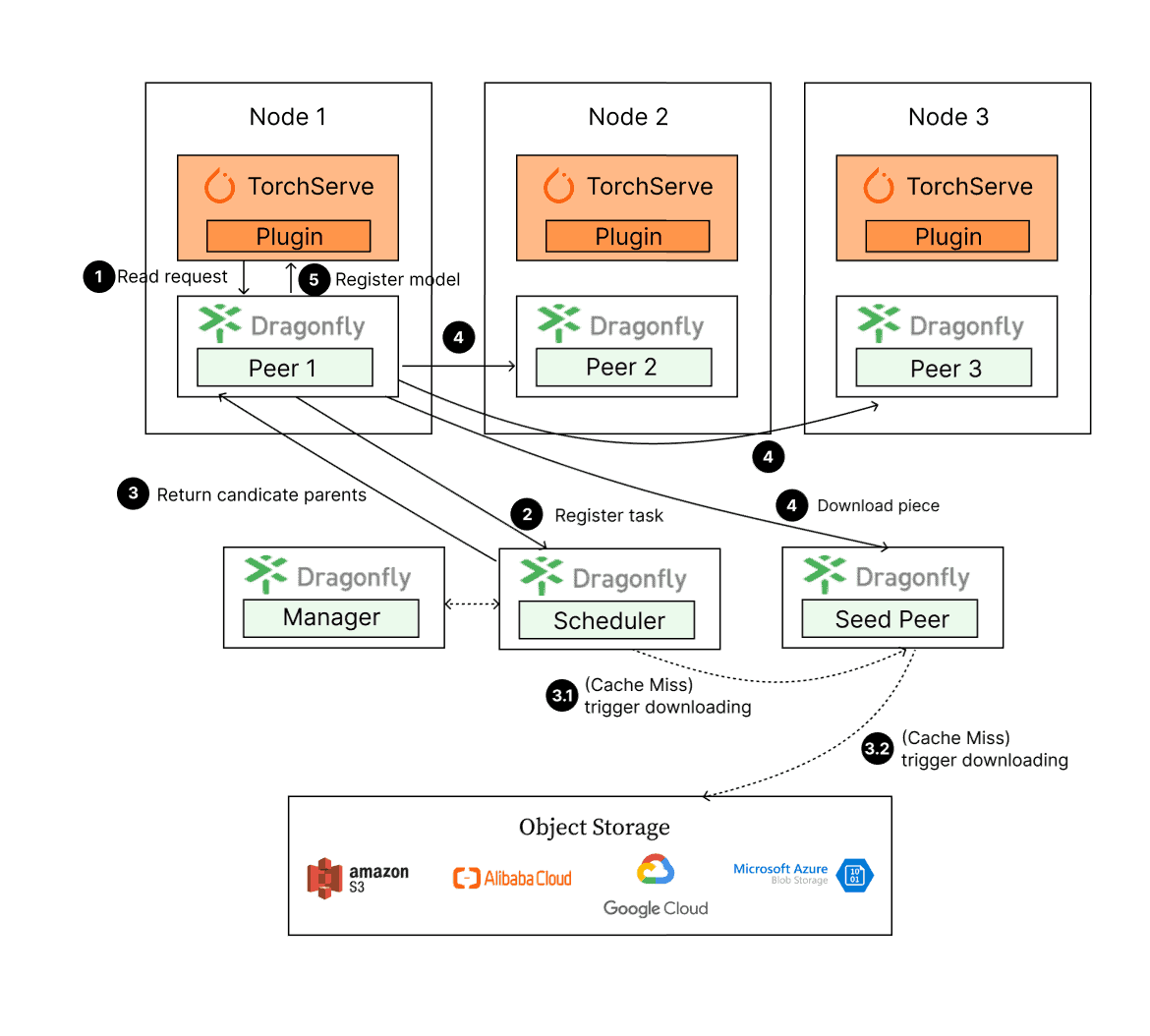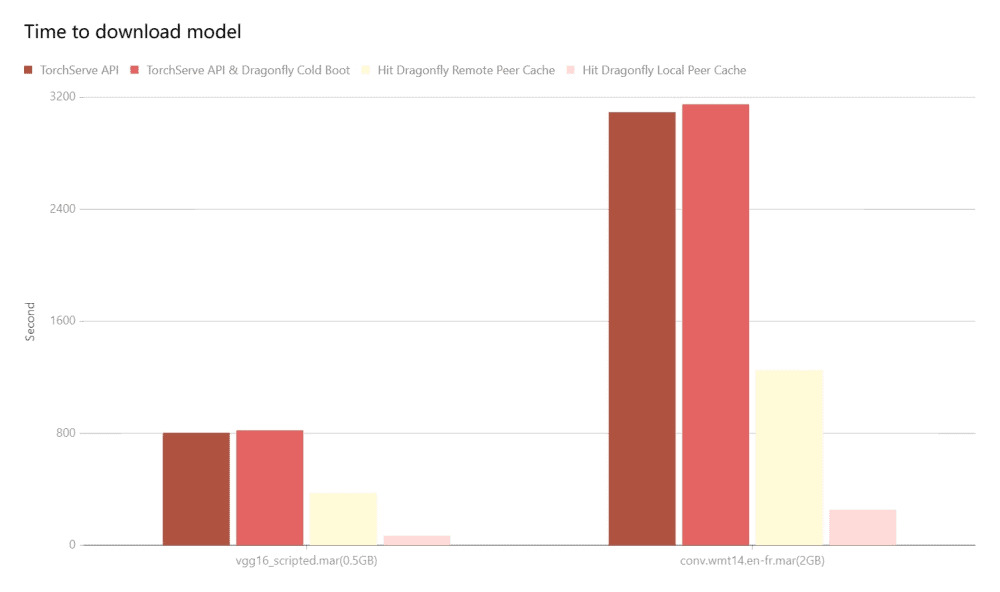Posted on September 1, 2023
CNCF projects highlighted in this post, and migrated by mingcheng.
Dragonfly provides efficient, stable, securefile distribution and image acceleration based on p2p technology to be the best practice and standard solution in cloud native architectures. It is hosted by the Cloud Native Computing Foundation(CNCF) as an Incubating Level Project.
This article introduces the deployment of dragonfly for multi-cluster kubernetes. A dragonfly cluster manages cluster within a network. If you have two clusters with disconnected networks, you can use two dragonfly clusters to manage their own clusters.
The recommended deployment for multi-cluster kubernetes is to use a dragonfly cluster to manage a kubernetes cluster, and use a centralized manager service to manage multiple dragonfly clusters. Because peer can only transmit data in its own dragonfly cluster, if a kubernetes cluster deploys a dragonfly cluster, then a kubernetes cluster forms a p2p network, and internal peers can only schedule and transmit data in a kubernetes cluster.
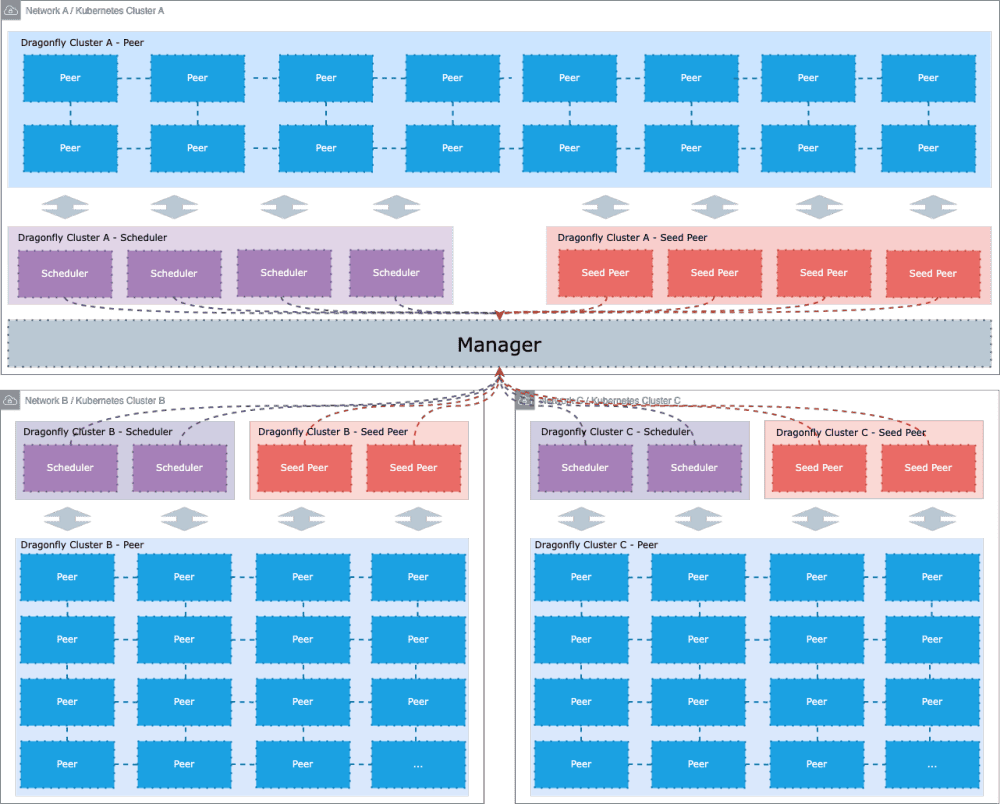
Setup kubernetes cluster
Kind is recommended if no Kubernetes cluster is available for testing.
Create kind cluster configuration file kind-config.yaml, configuration content is as follows:
kind: Cluster
apiVersion: kind.x-k8s.io/v1alpha4
nodes:
- role: control-plane
- role: worker
extraPortMappings:
- containerPort: 30950
hostPort: 8080
labels:
cluster: a
- role: worker
labels:
cluster: a
- role: worker
labels:
cluster: b
- role: worker
labels:
cluster: b
Create cluster using the configuration file:
kind create cluster --config kind-config.yaml
Switch the context of kubectl to kind cluster A:
kubectl config use-context kind-kind
Kind loads dragonfly image
Pull dragonfly latest images:
docker pull dragonflyoss/scheduler:latest
docker pull dragonflyoss/manager:latest
docker pull dragonflyoss/dfdaemon:latest
Kind cluster loads dragonfly latest images:
kind load docker-image dragonflyoss/scheduler:latest
kind load docker-image dragonflyoss/manager:latest
kind load docker-image dragonflyoss/dfdaemon:latest
Create dragonfly cluster A
Create dragonfly cluster A, the schedulers, seed peers, peers and centralized manager included in the cluster should be installed using helm.
Create dragonfly cluster A based on helm charts
Create dragonfly cluster A charts configuration file charts-config-cluster-a.yaml, configuration content is as follows:
containerRuntime:
containerd:
enable: true
injectConfigPath: true
registries:
- 'https://ghcr.io'
scheduler:
image: dragonflyoss/scheduler
tag: latest
nodeSelector:
cluster: a
replicas: 1
metrics:
enable: true
config:
verbose: true
pprofPort: 18066
seedPeer:
image: dragonflyoss/dfdaemon
tag: latest
nodeSelector:
cluster: a
replicas: 1
metrics:
enable: true
config:
verbose: true
pprofPort: 18066
dfdaemon:
image: dragonflyoss/dfdaemon
tag: latest
nodeSelector:
cluster: a
metrics:
enable: true
config:
verbose: true
pprofPort: 18066
manager:
image: dragonflyoss/manager
tag: latest
nodeSelector:
cluster: a
replicas: 1
metrics:
enable: true
config:
verbose: true
pprofPort: 18066
jaeger:
enable: true
Create dragonfly cluster A using the configuration file:
$ helm repo add dragonfly https://dragonflyoss.github.io/helm-charts/
$ helm install --wait --create-namespace --namespace cluster-a dragonfly dragonfly/dragonfly -f charts-config-cluster-a.yaml
NAME: dragonfly
LAST DEPLOYED: Mon Aug 7 22:07:02 2023
NAMESPACE: cluster-a
STATUS: deployed
REVISION: 1
TEST SUITE: None
NOTES:
1. Get the scheduler address by running these commands:
export SCHEDULER_POD_NAME=$(kubectl get pods --namespace cluster-a -l "app=dragonfly,release=dragonfly,component=scheduler" -o jsonpath={.items[0].metadata.name})
export SCHEDULER_CONTAINER_PORT=$(kubectl get pod --namespace cluster-a $SCHEDULER_POD_NAME -o jsonpath="{.spec.containers[0].ports[0].containerPort}")
kubectl --namespace cluster-a port-forward $SCHEDULER_POD_NAME 8002:$SCHEDULER_CONTAINER_PORT
echo "Visit http://127.0.0.1:8002 to use your scheduler"
2. Get the dfdaemon port by running these commands:
export DFDAEMON_POD_NAME=$(kubectl get pods --namespace cluster-a -l "app=dragonfly,release=dragonfly,component=dfdaemon" -o jsonpath={.items[0].metadata.name})
export DFDAEMON_CONTAINER_PORT=$(kubectl get pod --namespace cluster-a $DFDAEMON_POD_NAME -o jsonpath="{.spec.containers[0].ports[0].containerPort}")
You can use $DFDAEMON_CONTAINER_PORT as a proxy port in Node.
3. Configure runtime to use dragonfly:
https://d7y.io/docs/getting-started/quick-start/kubernetes/
4. Get Jaeger query URL by running these commands:
export JAEGER_QUERY_PORT=$(kubectl --namespace cluster-a get services dragonfly-jaeger-query -o jsonpath="{.spec.ports[0].port}")
kubectl --namespace cluster-a port-forward service/dragonfly-jaeger-query 16686:$JAEGER_QUERY_PORT
echo "Visit http://127.0.0.1:16686/search?limit=20&lookback=1h&maxDuration&minDuration&service=dragonfly to query download events"
Check that dragonfly cluster A is deployed successfully:
$ kubectl get po -n cluster-a
NAME READY STATUS RESTARTS AGE
dragonfly-dfdaemon-7t6wc 1/1 Running 0 3m18s
dragonfly-dfdaemon-r45bk 1/1 Running 0 3m18s
dragonfly-jaeger-84dbfd5b56-fmhh6 1/1 Running 0 3m18s
dragonfly-manager-75f4c54d6d-tr88v 1/1 Running 0 3m18s
dragonfly-mysql-0 1/1 Running 0 3m18s
dragonfly-redis-master-0 1/1 Running 0 3m18s
dragonfly-redis-replicas-0 1/1 Running 1 (2m ago) 3m18s
dragonfly-redis-replicas-1 1/1 Running 0 96s
dragonfly-redis-replicas-2 1/1 Running 0 45s
dragonfly-scheduler-0 1/1 Running 0 3m18s
dragonfly-seed-peer-0 1/1 Running 1 (37s ago) 3m18s
Create NodePort service of the manager REST service
Create the manager REST service configuration file manager-rest-svc.yaml, configuration content is as follows:
apiVersion: v1
kind: Service
metadata:
name: manager-rest
namespace: cluster-a
spec:
type: NodePort
ports:
- name: http
nodePort: 30950
port: 8080
selector:
app: dragonfly
component: manager
release: dragonfly
Create manager REST service using the configuration file:
kubectl apply -f manager-rest-svc.yaml -n cluster-a
Visit manager console
Visit address localhost:8080 to see the manager console. Sign in the console with the default root user, the username is root and password is dragonfly.
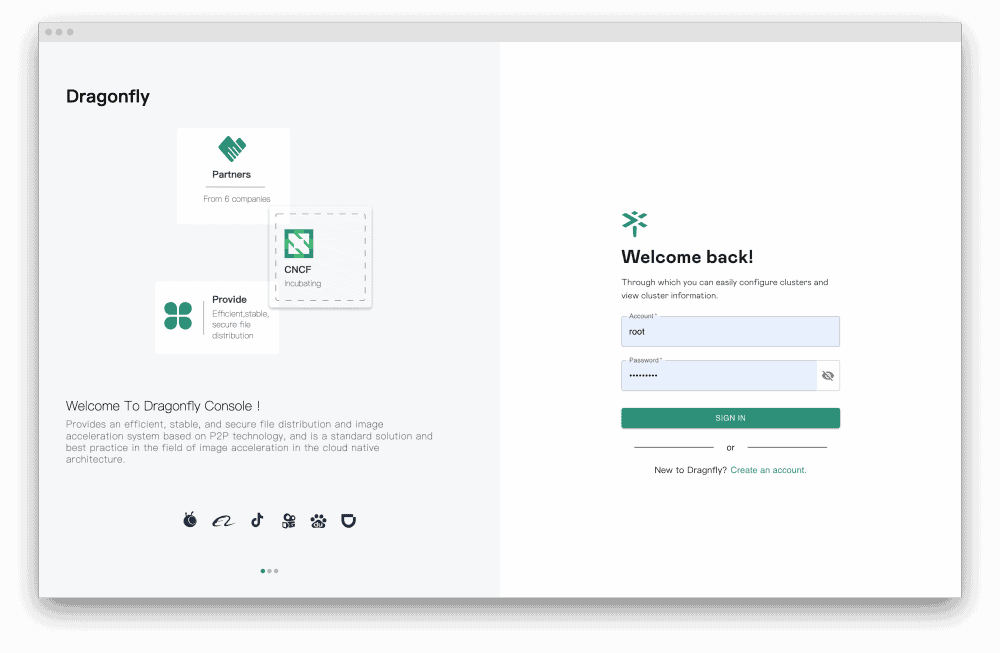

By default, Dragonfly will automatically create dragonfly cluster A record in manager when it is installed for the first time. You can click dragonfly cluster A to view the details.
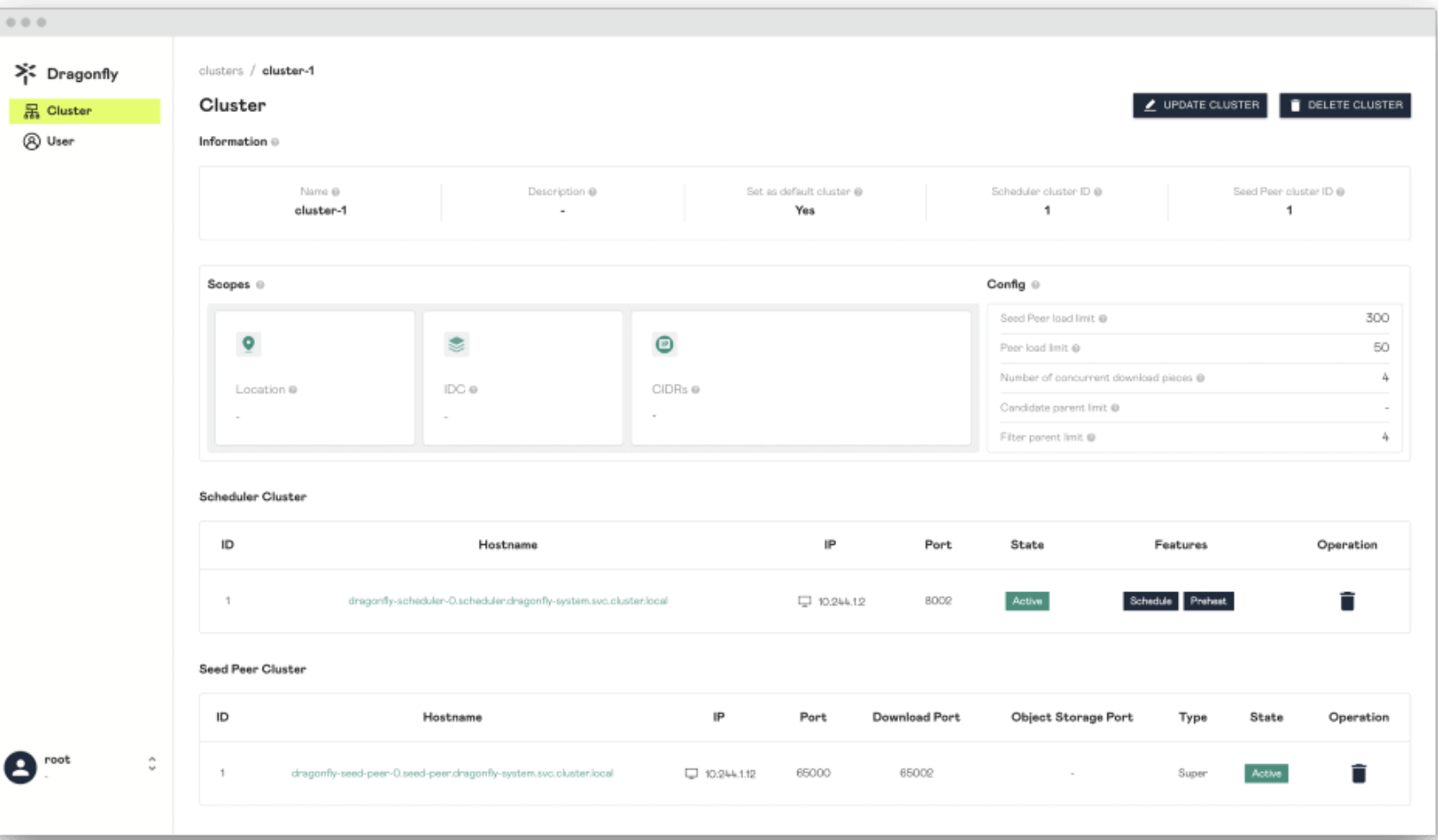
Create dragonfly cluster B
Create dragonfly cluster B, you need to create a dragonfly cluster record in the manager console first, and the schedulers, seed peers and peers included in the dragonfly cluster should be installed using helm.
Create dragonfly cluster B in the manager console
Visit manager console and click the ADD CLUSTER button to add dragonfly cluster B record. Note that the IDC is set to cluster-2 to match the peer whose IDC is cluster-2.
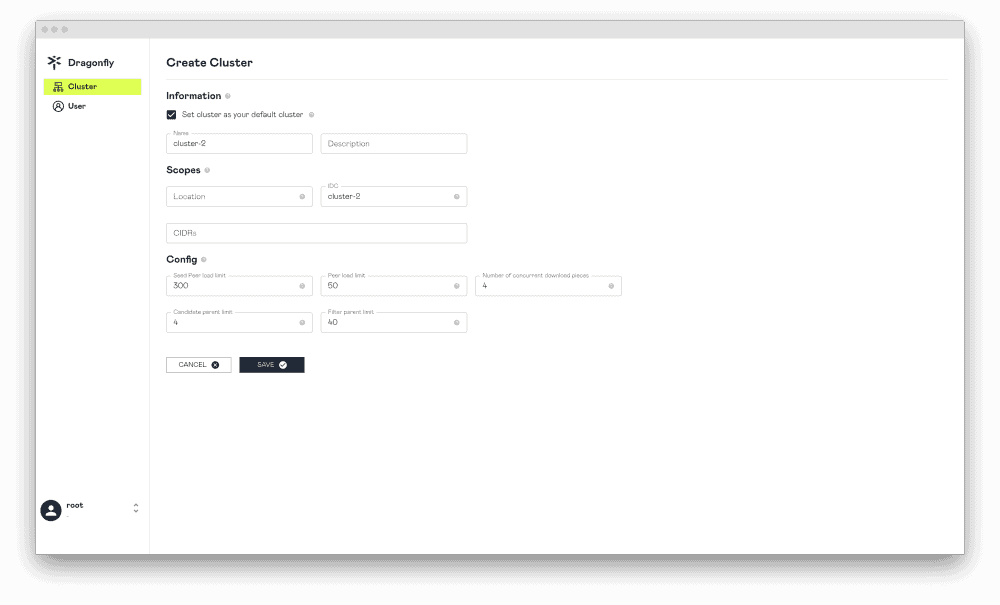
Create dragonfly cluster B record successfully.
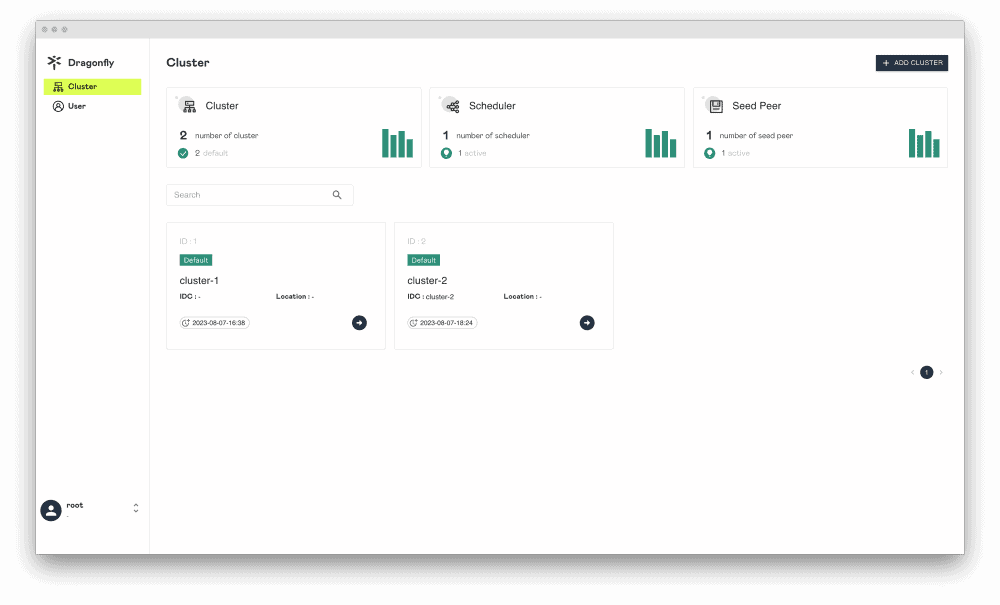
Use scopes to distinguish different dragonfly clusters
The dragonfly cluster needs to serve the scope. It wil provide scheduler services and seed peer services to peers in the scope. The scopes of the dragonfly cluster are configured when the console is created and updated. The scopes of the peer are configured in peer YAML config, the fields are host.idc, host.location and host.advertiseIP, refer to dfdaemon config.
If the peer scopes match the dragonfly cluster scopes, then the peer will use the dragonfly cluster’s scheduler and seed peer first, and if there is no matching dragonfly cluster then use the default dragonfly cluster.
Location: The dragonfly cluster needs to serve all peers in the location. When the location in the peer configuration matches the location in the dragonfly cluster, the peer will preferentially use the scheduler and the seed peer of the dragonfly cluster. It separated by “|”, for example “area|country|province|city”.
IDC: The dragonfly cluster needs to serve all peers in the IDC. When the IDC in the peer configuration matches the IDC in the dragonfly cluster, the peer will preferentially use the scheduler and the seed peer of the dragonfly cluster. IDC has higher priority than location in the scopes.
CIDRs: The dragonfly cluster needs to serve all peers in the CIDRs. The advertise IP will be reported in the peer configuration when the peer is started, and if the advertise IP is empty in the peer configuration, peer will automatically get expose IP as advertise IP. When advertise IP of the peer matches the CIDRs in dragonfly cluster, the peer will preferentially use the scheduler and the seed peer of the dragonfly cluster. CIDRs has higher priority than IDC in the scopes.
Create dragonfly cluster B based on helm charts
Create charts configuration with cluster information in the manager console.

- Scheduler.config.manager.schedulerClusterID using the Scheduler cluster ID from cluster-2 information in the manager console.
- Scheduler.config.manager.addr is address of the manager GRPC server.
- seedPeer.config.scheduler.manager.seedPeer.clusterID using the Seed peer cluster ID from cluster-2 information in the manager console.
- seedPeer.config.scheduler.manager.netAddrs[0].addr is address of the manager GRPC server.
- dfdaemon.config.host.idc using the IDC from cluster-2 information in the manager console.
- dfdaemon.config.scheduler.manager.netAddrs[0].addr is address of the manager GRPC server.
- externalManager.host is host of the manager GRPC server.
- externalRedis.addrs[0] is address of the redis.
Create dragonfly cluster B charts configuration file charts-config-cluster-b.yaml, configuration content is as follows:
containerRuntime:
containerd:
enable: true
injectConfigPath: true
registries:
- 'https://ghcr.io'
scheduler:
image: dragonflyoss/scheduler
tag: latest
nodeSelector:
cluster: b
replicas: 1
config:
manager:
addr: dragonfly-manager.cluster-a.svc.cluster.local:65003
schedulerClusterID: 2
seedPeer:
image: dragonflyoss/dfdaemon
tag: latest
nodeSelector:
cluster: b
replicas: 1
config:
scheduler:
manager:
netAddrs:
- type: tcp
addr: dragonfly-manager.cluster-a.svc.cluster.local:65003
seedPeer:
enable: true
clusterID: 2
dfdaemon:
image: dragonflyoss/dfdaemon
tag: latest
nodeSelector:
cluster: b
config:
host:
idc: cluster-2
scheduler:
manager:
netAddrs:
- type: tcp
addr: dragonfly-manager.cluster-a.svc.cluster.local:65003
manager:
enable: false
externalManager:
enable: true
host: dragonfly-manager.cluster-a.svc.cluster.local
restPort: 8080
grpcPort: 65003
redis:
enable: false
externalRedis:
addrs:
- dragonfly-redis-master.cluster-a.svc.cluster.local:6379
password: dragonfly
mysql:
enable: false
jaeger:
enable: true
Create dragonfly cluster B using the configuration file:
$ helm install --wait --create-namespace --namespace cluster-b dragonfly dragonfly/dragonfly -f charts-config-cluster-b.yaml
NAME: dragonfly
LAST DEPLOYED: Mon Aug 7 22:13:51 2023
NAMESPACE: cluster-b
STATUS: deployed
REVISION: 1
TEST SUITE: None
NOTES:
1. Get the scheduler address by running these commands:
export SCHEDULER_POD_NAME=$(kubectl get pods --namespace cluster-b -l "app=dragonfly,release=dragonfly,component=scheduler" -o jsonpath={.items[0].metadata.name})
export SCHEDULER_CONTAINER_PORT=$(kubectl get pod --namespace cluster-b $SCHEDULER_POD_NAME -o jsonpath="{.spec.containers[0].ports[0].containerPort}")
kubectl --namespace cluster-b port-forward $SCHEDULER_POD_NAME 8002:$SCHEDULER_CONTAINER_PORT
echo "Visit http://127.0.0.1:8002 to use your scheduler"
2. Get the dfdaemon port by running these commands:
export DFDAEMON_POD_NAME=$(kubectl get pods --namespace cluster-b -l "app=dragonfly,release=dragonfly,component=dfdaemon" -o jsonpath={.items[0].metadata.name})
export DFDAEMON_CONTAINER_PORT=$(kubectl get pod --namespace cluster-b $DFDAEMON_POD_NAME -o jsonpath="{.spec.containers[0].ports[0].containerPort}")
You can use $DFDAEMON_CONTAINER_PORT as a proxy port in Node.
3. Configure runtime to use dragonfly:
https://d7y.io/docs/getting-started/quick-start/kubernetes/
4. Get Jaeger query URL by running these commands:
export JAEGER_QUERY_PORT=$(kubectl --namespace cluster-b get services dragonfly-jaeger-query -o jsonpath="{.spec.ports[0].port}")
kubectl --namespace cluster-b port-forward service/dragonfly-jaeger-query 16686:$JAEGER_QUERY_PORT
echo "Visit http://127.0.0.1:16686/search?limit=20&lookback=1h&maxDuration&minDuration&service=dragonfly to query download events"
Check that dragonfly cluster B is deployed successfully:
$ kubectl get po -n cluster-b
NAME READY STATUS RESTARTS AGE
dragonfly-dfdaemon-q8bsg 1/1 Running 0 67s
dragonfly-dfdaemon-tsqls 1/1 Running 0 67s
dragonfly-jaeger-84dbfd5b56-rg5dv 1/1 Running 0 67s
dragonfly-scheduler-0 1/1 Running 0 67s
dragonfly-seed-peer-0 1/1 Running 0 67s
Create dragonfly cluster B successfully.

Using dragonfly to distribute images for multi-cluster kubernetes
Containerd pull image back-to-source for the first time through dragonfly in cluster A
Pull ghcr.io/dragonflyoss/dragonfly2/scheduler:v2.0.5 image in kind-worker node:
docker exec -i kind-worker /usr/local/bin/crictl pull ghcr.io/dragonflyoss/dragonfly2/scheduler:v2.0.5
Expose jaeger’s port 16686:
kubectl --namespace cluster-a port-forward service/dragonfly-jaeger-query 16686:16686
Visit the Jaeger page in http://127.0.0.1:16686/search, Search for tracing with Tags http.url="/v2/dragonflyoss/dragonfly2/scheduler/blobs/sha256:82cbeb56bf8065dfb9ff5a0c6ea212ab3a32f413a137675df59d496e68eaf399?ns=ghcr.io":

Tracing details:
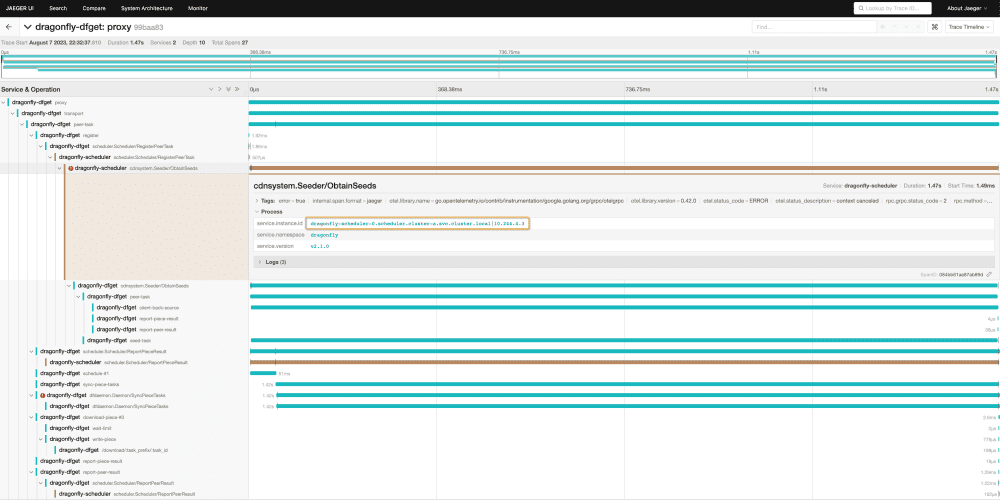
When pull image back-to-source for the first time through dragonfly, peer uses cluster-a’s scheduler and seed peer. It takes 1.47s to download the 82cbeb56bf8065dfb9ff5a0c6ea212ab3a32f413a137675df59d496e68eaf399 layer.
Containerd pull image hits the cache of remote peer in cluster A
Pull ghcr.io/dragonflyoss/dragonfly2/scheduler:v2.0.5 image in kind-worker2 node:
docker exec -i kind-worker2 /usr/local/bin/crictl pull ghcr.io/dragonflyoss/dragonfly2/scheduler:v2.0.5
Expose jaeger’s port 16686:
kubectl --namespace cluster-a port-forward service/dragonfly-jaeger-query 16686:16686
Visit the Jaeger page in http://127.0.0.1:16686/search, Search for tracing with Tags http.url="/v2/dragonflyoss/dragonfly2/scheduler/blobs/sha256:82cbeb56bf8065dfb9ff5a0c6ea212ab3a32f413a137675df59d496e68eaf399?ns=ghcr.io":

Tracing details:
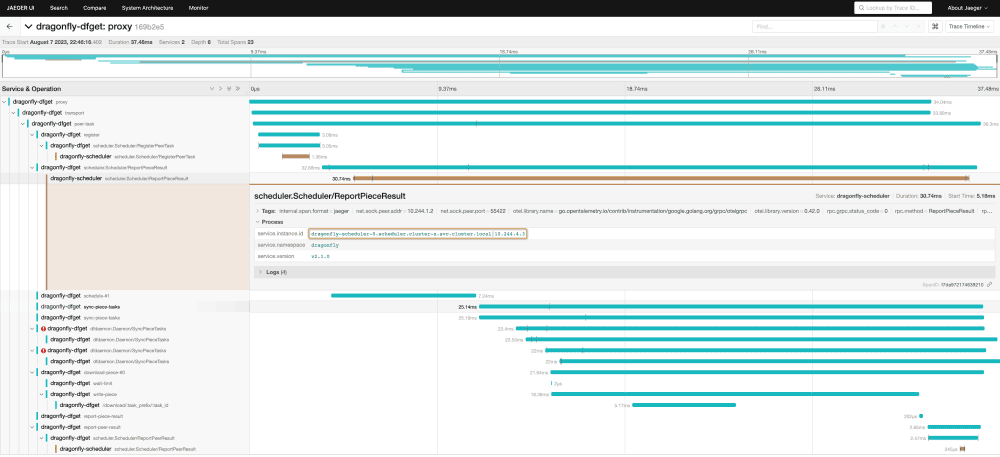
When pull image hits cache of remote peer, peer uses cluster-a’s scheduler and seed peer. It takes 37.48ms to download the 82cbeb56bf8065dfb9ff5a0c6ea212ab3a32f413a137675df59d496e68eaf399 layer.
Containerd pull image back-to-source for the first time through dragonfly in cluster B
Pull ghcr.io/dragonflyoss/dragonfly2/scheduler:v2.0.5 image in kind-worker3 node:
docker exec -i kind-worker3 /usr/local/bin/crictl pull ghcr.io/dragonflyoss/dragonfly2/scheduler:v2.0.5
Expose jaeger’s port 16686:
kubectl --namespace cluster-b port-forward service/dragonfly-jaeger-query 16686:16686
Visit the Jaeger page in http://127.0.0.1:16686/search, Search for tracing with Tags http.url=”/v2/dragonflyoss/dragonfly2/scheduler/blobs/sha256:82cbeb56bf8065dfb9ff5a0c6ea212ab3a32f413a137675df59d496e68eaf399?ns=ghcr.io”:

Tracing details:

When pull image back-to-source for the first time through dragonfly, peer uses cluster-b’s scheduler and seed peer. It takes 4.97s to download the 82cbeb56bf8065dfb9ff5a0c6ea212ab3a32f413a137675df59d496e68eaf399 layer.
Containerd pull image hits the cache of remote peer in cluster B
Pull ghcr.io/dragonflyoss/dragonfly2/scheduler:v2.0.5 image in kind-worker4 node:
docker exec -i kind-worker4 /usr/local/bin/crictl pull ghcr.io/dragonflyoss/dragonfly2/scheduler:v2.0.5
Expose jaeger’s port 16686:
kubectl --namespace cluster-b port-forward service/dragonfly-jaeger-query 16686:16686
Visit the Jaeger page in http://127.0.0.1:16686/search, Search for tracing with Tags http.url="/v2/dragonflyoss/dragonfly2/scheduler/blobs/sha256:82cbeb56bf8065dfb9ff5a0c6ea212ab3a32f413a137675df59d496e68eaf399?ns=ghcr.io":

Tracing details:
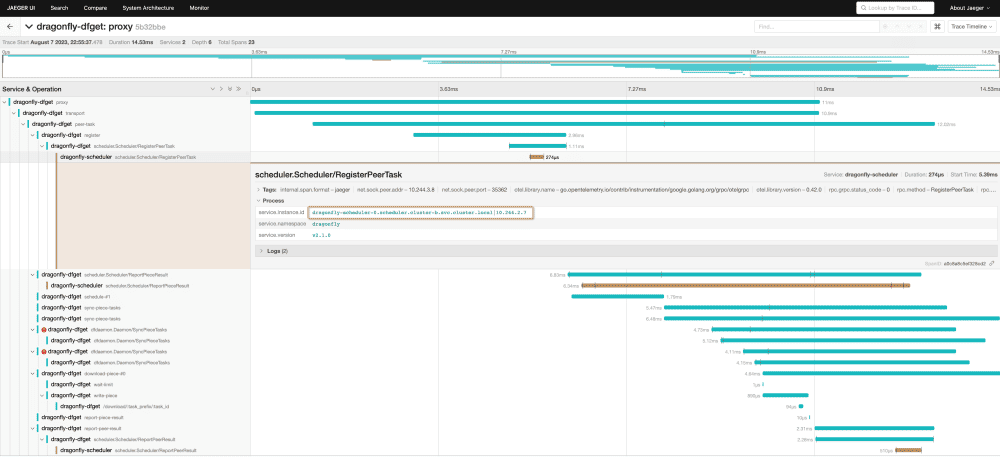
When pull image hits cache of remote peer, peer uses cluster-b’s scheduler and seed peer. It takes 14.53ms to download the 82cbeb56bf8065dfb9ff5a0c6ea212ab3a32f413a137675df59d496e68eaf399 layer.
Links
Dragonfly Website: https://d7y.io/
Dragonfly Github Repo: https://github.com/dragonflyoss/dragonfly
Dragonfly Slack Channel: #dragonfly on CNCF Slack
Dragonfly Discussion Group: dragonfly-discuss@googlegroups.com
Dragonfly Twitter: @dragonfly_oss
Nydus Website: https://nydus.dev/
Nydus Github Repo: https://github.com/dragonflyoss/image-service
